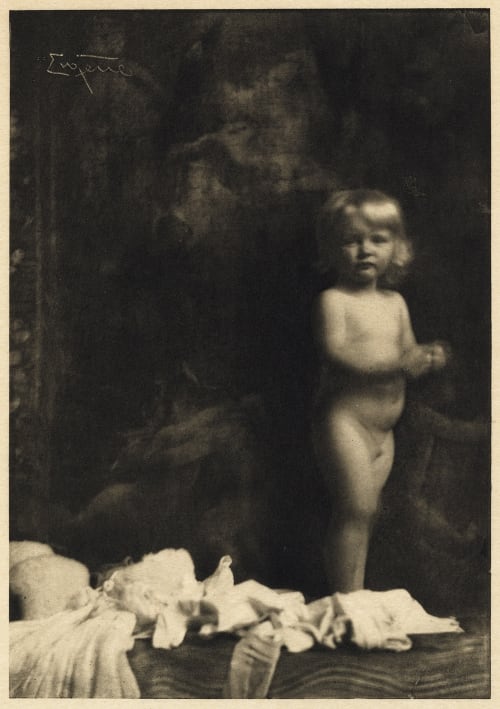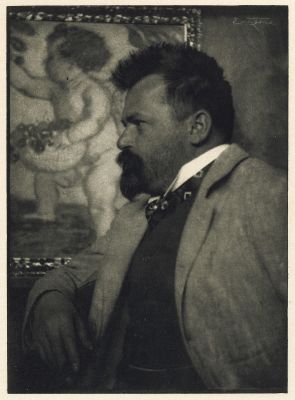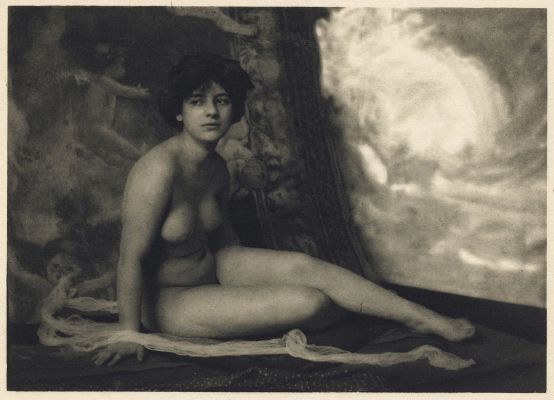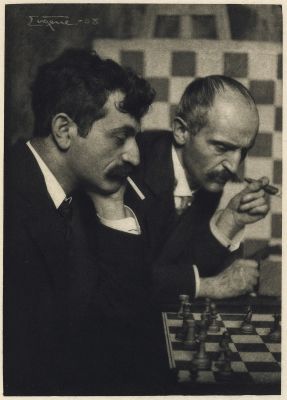
Title
Nude – A ChildArtist
Eugene, Frank (American, 1865-1936)Publication
Camera Work XXXIDate
1910Process
PhotogravureAtelier
F. Bruckmann Verlag, MunichImage Size
17.1 x 12 cm
In many ways Eugene’s nudes reflect a certain conformity with the predominant moral canon. Myriad articles and intense debates in the specialist magazines of the time on the “educative” value of nude photography had demanded the selection of “natural” surroundings, “en plein air,” a prudent choice of model, and an idealized presentation. By comparison with academic nude paintings in widespread use by artists since the middle of the 19th century as pictorial substitutes for models, the pictorialists experienced the depiction of female or male nudes both as a liberation from puritanical moral constraints and as a return to a more natural way of life. They had a preference for scenes and figures from ancient mythology which they re-staged for their photographs. [1]
Reproduced / Exhibited
Pohlmann, Ulrich. Frank Eugene: The Dream of Beauty. Munich: Nazraeli Press, 1996. no. 195 (titled Baby Bonsels).
References
[1] Eugene, Frank, and Ulrich Pohlmann. Frank Eugene, the Dream of Beauty. Munich: Nazraeli Press, 1995. p. 183











